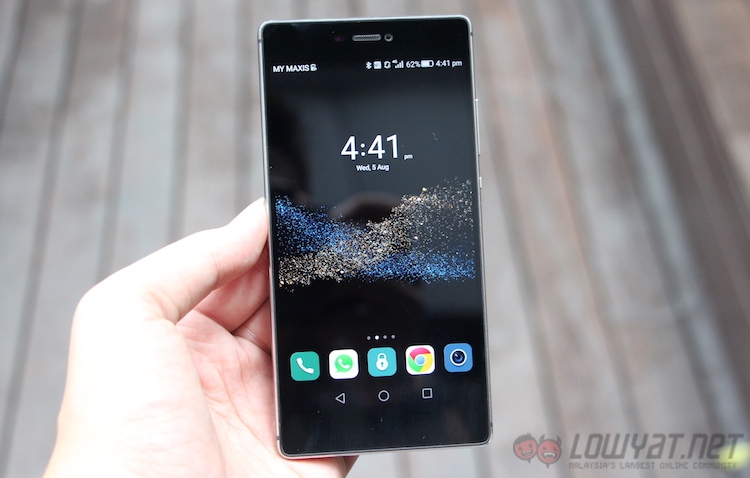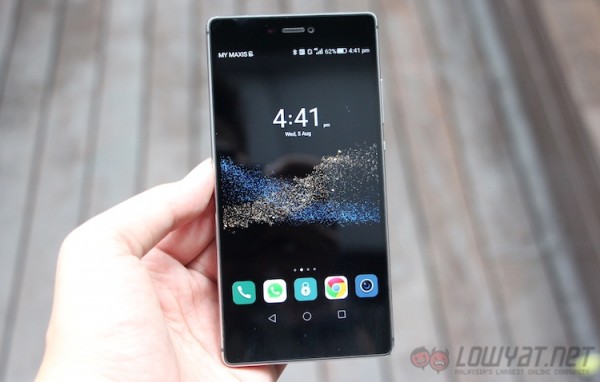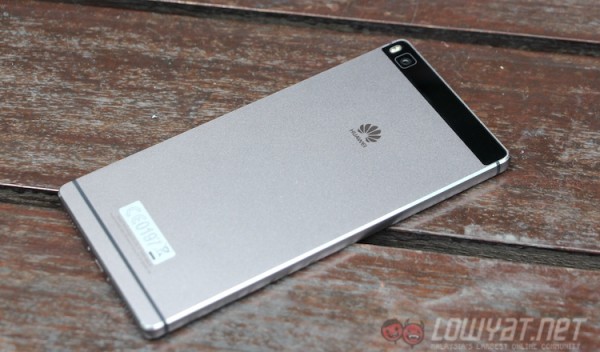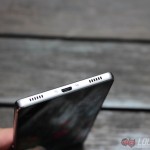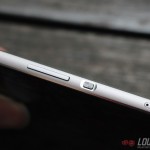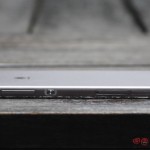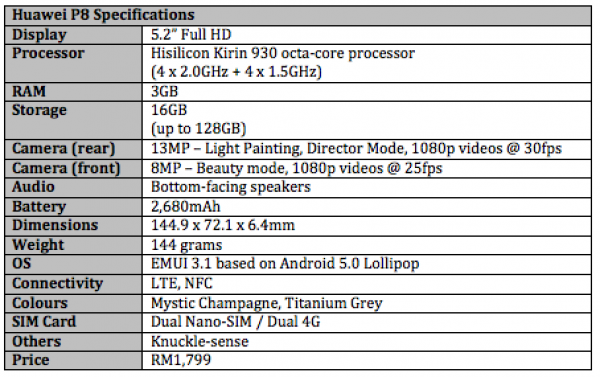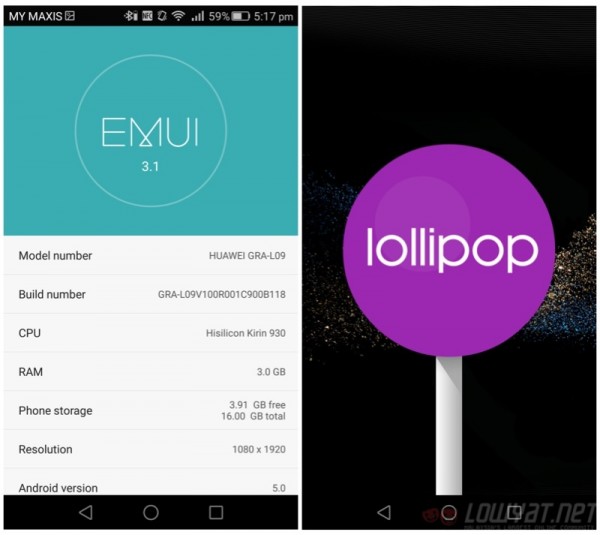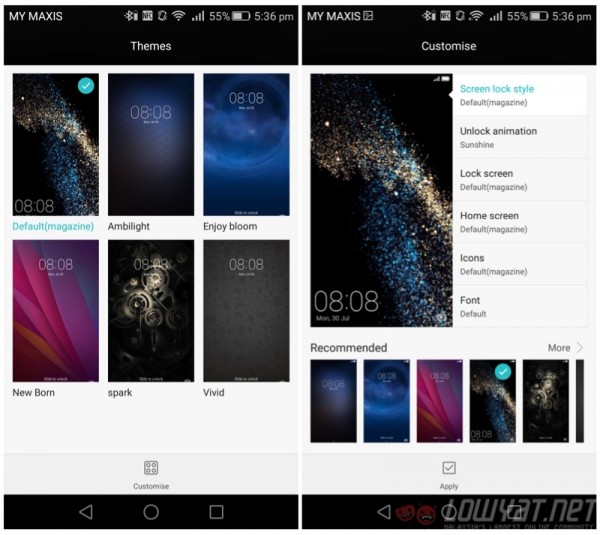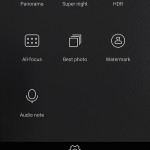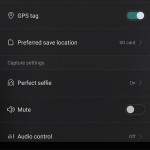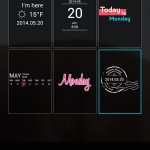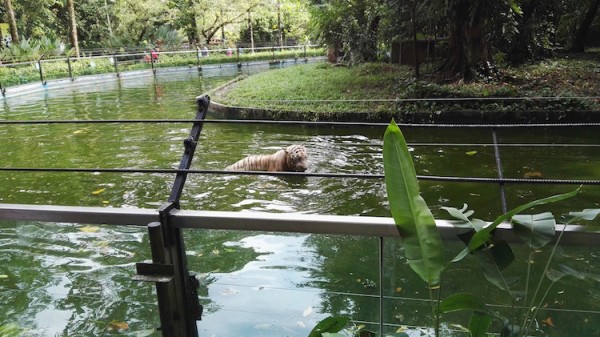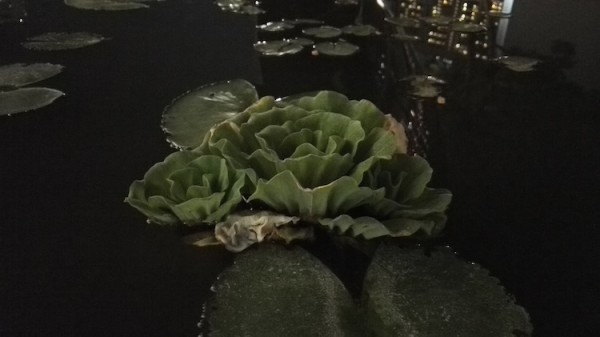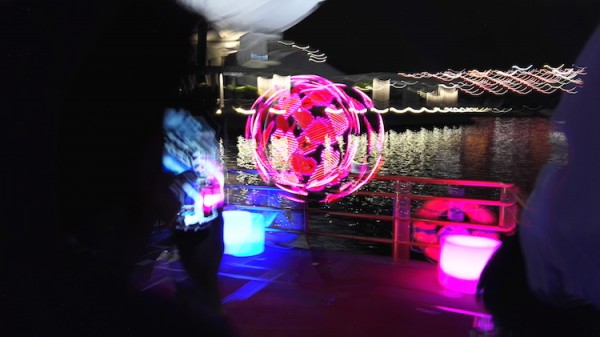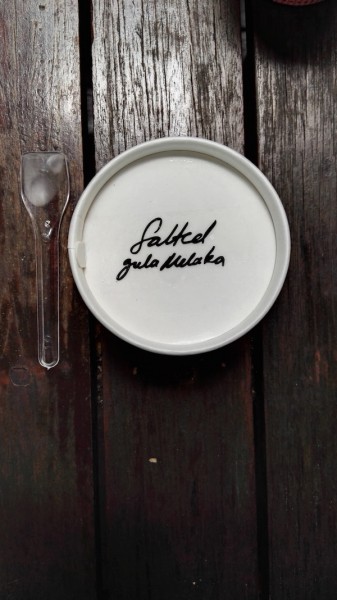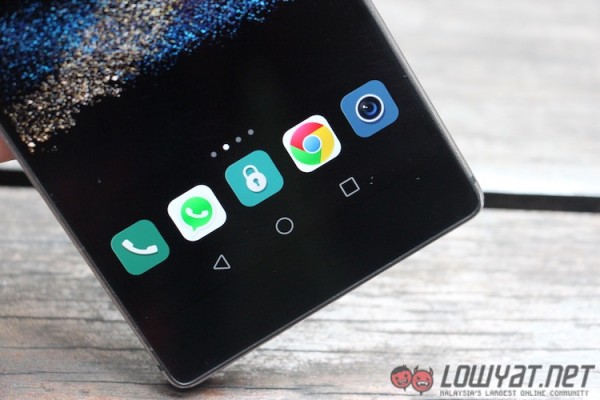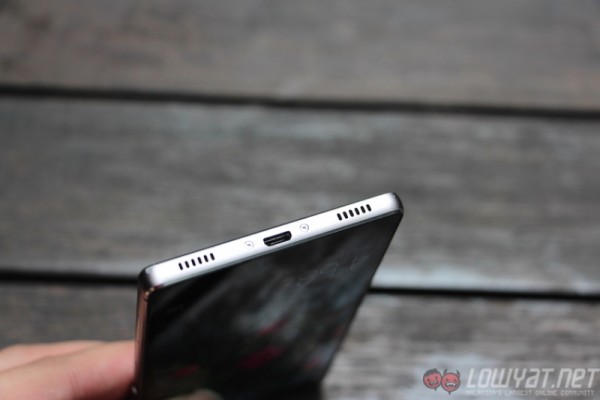Huawei has finally launched its latest flagship smartphone into the market – the P8. The Chinese held several big launches for the device – a global one in London in April this year, followed by a regional launch in Singapore in early June, and a local launch later in the month. Needless to say, Huawei is extremely proud of the device, but how does it fare as a high end smartphone for daily use?
DESIGN & FIRST IMPRESSIONS
You’d be forgiven if you think that the P8 looks familiar. After all, most flagship smartphones today look similar with a premium metal design at the back that comes complete with plastic antenna lines running along the top and bottom of the device.
At a glance, the Huawei P8 looks like a larger version of the iPhone 5/5s with a rectangular design and shiny chamfered edges. The volume rocker, power button, SIM and microSD trays are all located on the right side of the device. The 3.5mm audio jack is located on the top, while the bottom features the micro USB charging port, speaker and microphone.
As always, the trays can be ejected using a pin. There are two different versions of Huawei P8: the dual-SIM variant lets you pick to either use the tray for microSD card or for the micro SIM. Unfortunately, the unit we received is a single SIM version so we can’t try out the tray.
I’m not a fan of the camera design on the back of the P8. While one good thing is that it’s flat, but it has a single piece of glass on the top, which makes it look as though it can easily be scratched; during my few weeks with it one part of the glass has already been noticeably scratched.
While the P8 isn’t water- or dust-resistant, Huawei says that it’s been designed to withstand splashes of water so even if you spill your cup of coffee on it, it shouldn’t matter – just don’t let it sit in the puddle of liquid for too long.
HARDWARE
The P8 does tend to heat up, especially when you use intensive apps like navigation. There was once when I reached home after driving with Google Maps, picked the phone, and felt like it was hot enough to cook an egg. Thankfully though, despite the heat, the phone will not lag or slow down under normal usage.
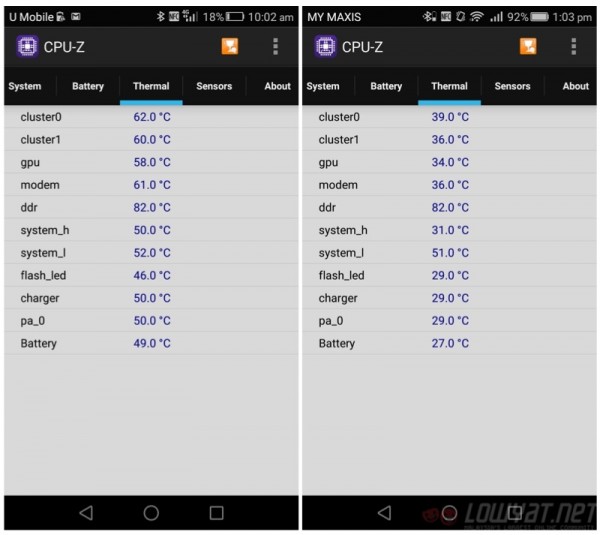 The image on the left shows how hot it became right after using GPS on my drive to work; to the right is the normal temperature
The image on the left shows how hot it became right after using GPS on my drive to work; to the right is the normal temperature
One thing to note: I’m not sure if it’s a problem with apps or the phone, but the P8 seems to have some connectivity issues. When I was pairing it with my Pebble Time, it kept disconnecting, and the notification access keeps getting disabled automatically. Thinking that it could be a problem with the Pebble Time app, I decided to use the P8 with Huawei’s very own TalkBand B2 instead, and yet it still tends to disconnect.
The connection problem extends to WhatsApp, where I won’t be able to connect to WhatsApp unless I end the app in the background, and restart the app. It’s getting more and more annoying, especially since this does not occur on other devices I’ve used, and has caused me to miss quite a few important messages. Thankfully though, other apps and service still work fine.
Other than that, the phone is as snappy as any flagship I’ve used.
BENCHMARKS
While the phone still works well under normal usage when it gets hot, I noticed that its AnTuTu benchmark score will lower after each consecutive test. The phone will feel slightly warmer, so it may be that some thermal throttling is in place to ensure the device does not overheat.
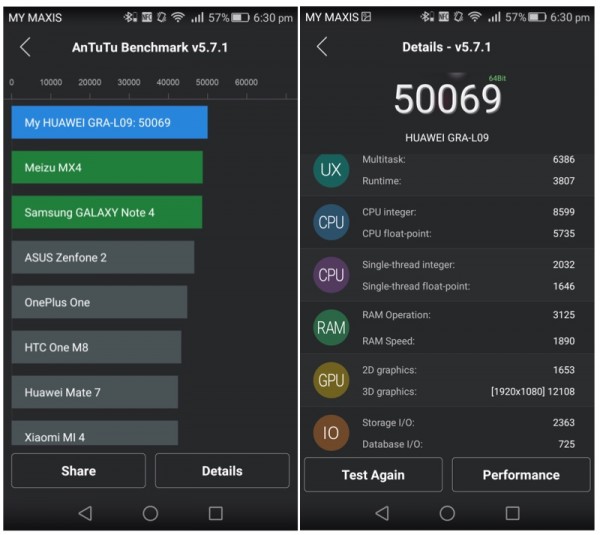 The highest AnTuTu score I received
The highest AnTuTu score I received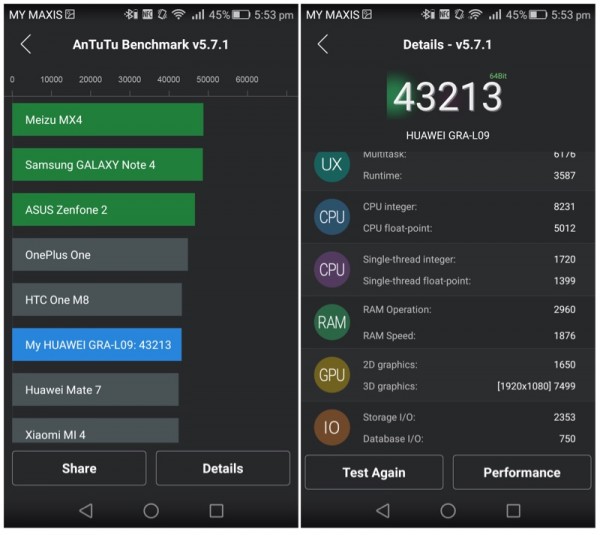 The lowest AnTuTu score after four consecutive tests
The lowest AnTuTu score after four consecutive tests
SOFTWARE
The Huawei P8 runs on Android 5.0.1 Lollipop with the company’s EMUI 3.1 ROM. Like most Chinese smartphone interfaces, it has no app drawer, placing everything on the home screen. Everything is well sorted into folders so you won’t have tens of pages filled with apps.
At the lock screen, you will need to swipe left or right to unlock the device, while swiping up will pull out a iOS-like shortcut menu that lets you launch apps like music, calculator, torch and camera. The menu is only available on the lock screen and unlike iOS, a simple swipe upwards on the lower parts of the lock screen will enable this menu. I actually find this quite annoying because I’ve tried on several attempts, pulling out that menu instead of unlocking the screen.
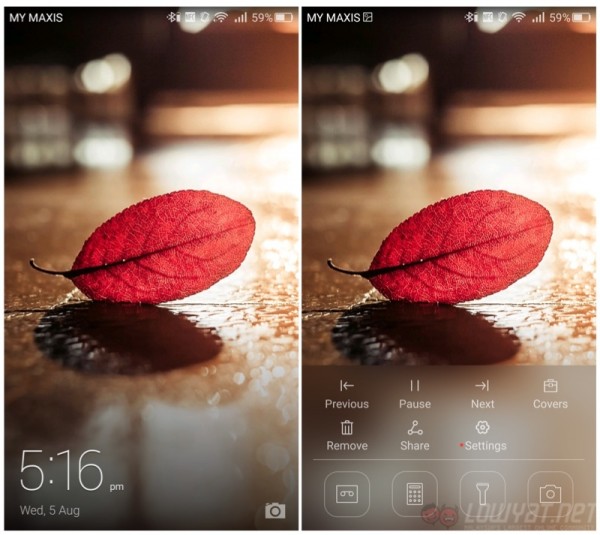 Pull up on the lock screen and you will get these shortcut options (right)
Pull up on the lock screen and you will get these shortcut options (right)
Once you enter to the home screen, the shortcut at the bottom will not be accessible. Instead, you will get your usual settings shortcuts from the notification panel on top. There is another Apple Spotlight-like search feature that lets you easily search for apps, contacts and such simply by swiping down on the homescreen. This is definitely a very convenient feature, especially if you have plenty of folders and homescreens.
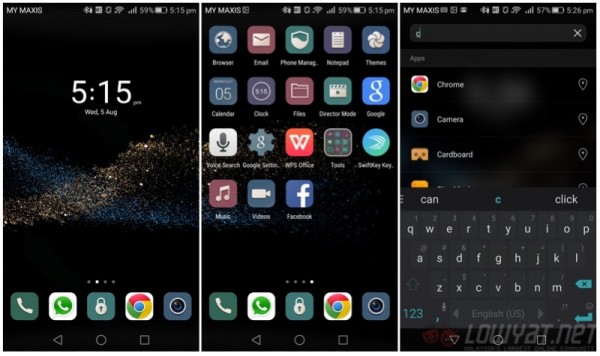 Easily search for apps by pulling down on the homescreen (right-most image)
Easily search for apps by pulling down on the homescreen (right-most image)
One of the P8 features that Huawei brags is Knuckle-sense, which lets you easily take screenshots simply by double tapping with your knuckle, or outline a section you would like to take a screenshot of. However, I find that it is not accurate, especially when the screen is a little dirty with facial oil, fingerprints and little debris caused by my toddler. When you wish to scroll using your finger, it will treat it as a knuckle, and starts drawing on the screen instead.
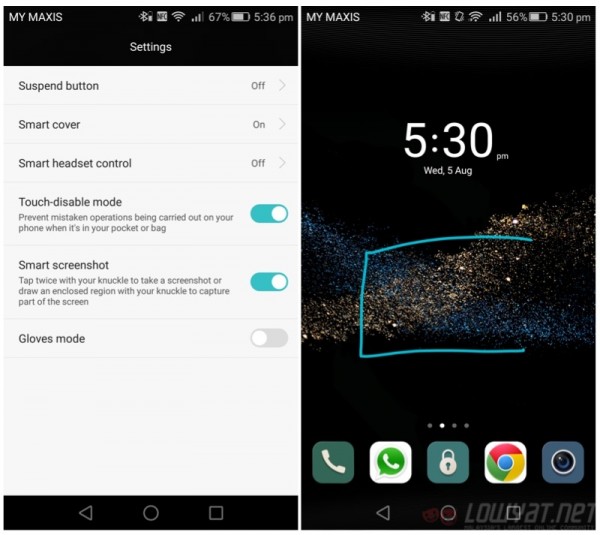 With Smart screenshot turned on, just use your knuckle to draw out sections you wish to take a screenshot of, or knock twice with your knuckles to take a screenshot of the entire screen
With Smart screenshot turned on, just use your knuckle to draw out sections you wish to take a screenshot of, or knock twice with your knuckles to take a screenshot of the entire screen
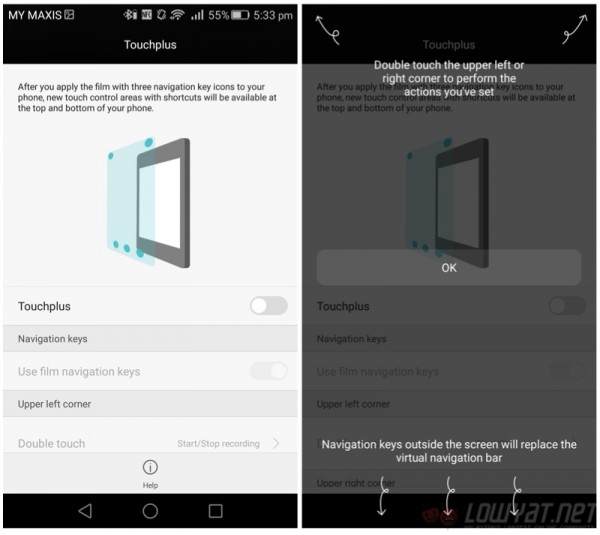 Touchplus feature that, with a special film applied, you can use the corners of the phone as shortcut to perform actions like taking a picture/screenshot and such. The navigation keys can also be placed to the bottom bezel of the phone so you have a bigger screen size to work on
Touchplus feature that, with a special film applied, you can use the corners of the phone as shortcut to perform actions like taking a picture/screenshot and such. The navigation keys can also be placed to the bottom bezel of the phone so you have a bigger screen size to work on
There is also a theme app, but unlike the rest – Xiaomi, Oppo, Vivo and even Samsung, there isn’t a store so you can’t download new themes, and there are only a handful of options you can pick from. Of course, you can customise a chosen theme a little like the lock screen style, unlock animation, icons and fonts, but there are very limited options on board.
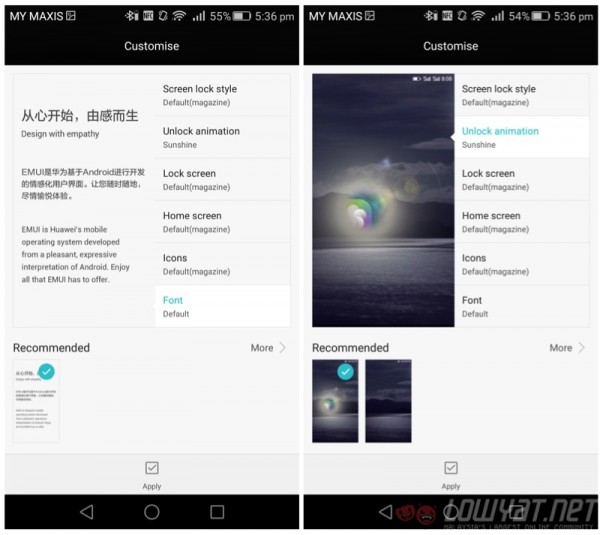 There are not much options to pick from
There are not much options to pick from
Some notable features found on EMUI 3.1 include a Magnifier app that, well, as its name suggests, acts like a magnifying glass. It uses the camera, and you can manually adjust the focus simply by pulling the bar at the bottom left/right; there’s also an option to turn on the flashlight. It’s nothing to shout about, but it might come in handy, especially for the elderly.
There is also a Phone Manager that lets you manage your phone in a single place. Scan and find out how you can optimise your phone – clear junk, close apps and such, manage your data usage, control the Notification center, lock apps, and more. These features can be accessed in the Settings app of course, but Huawei makes it easier to manage everything in a single place.
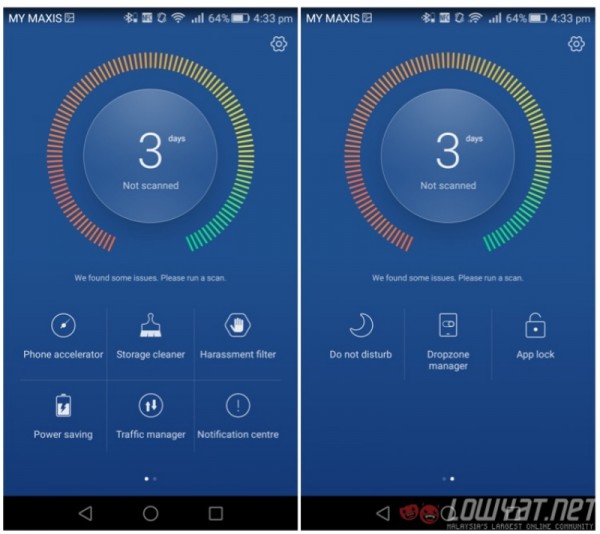 Phone Manager
Phone Manager
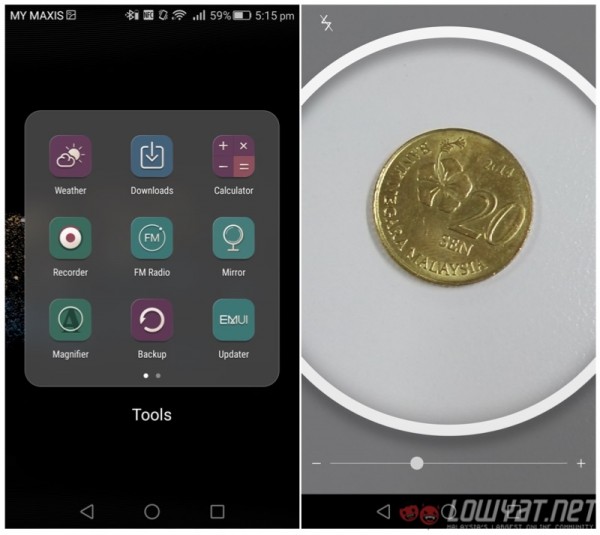 Some of the tools for P8, including a Magnifier app that helps to magnify things using the camera
Some of the tools for P8, including a Magnifier app that helps to magnify things using the camera
CAMERA
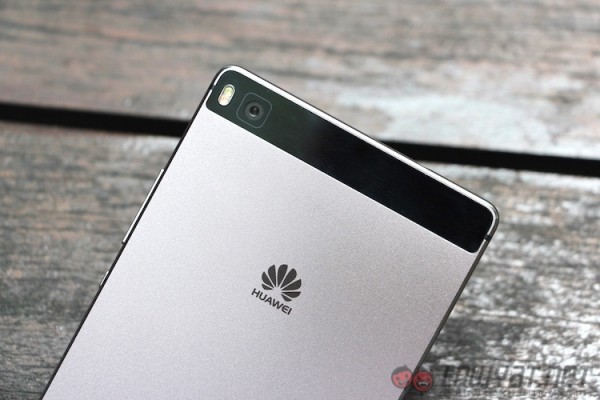
Like most smartphone manufacturers, Huawei is extremely proud of the camera on the P8. It has a 13MP sensor at the back that packs multiple technologies including an industry-leading OIS, the world’s first four-colour RGBW sensor for enhanced brightness, and four professional quality low-light shooting modes.
The interface is pretty straightforward. When you launch the app, you will be in a standard photo mode. You can switch between the various modes, including video, simply by swiping left/right. Additional settings like Panorama mode, super night mode, HDR, watermark and such can be accessed in the menu button. You can also access more settings controls like picking your own ISO (up to ISO 1600), white balance, and such inside the settings menu.
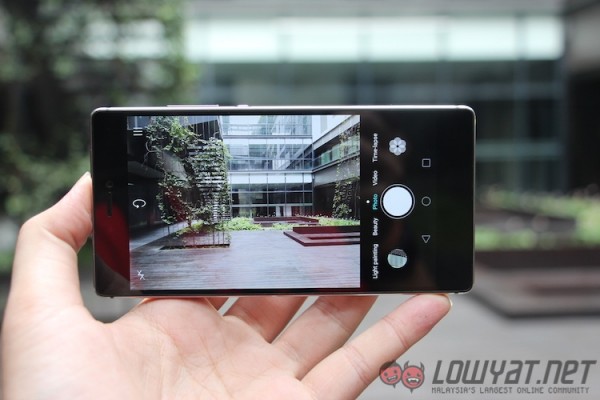
As for the picture quality, I think the camera performs well. It’s not as great as Samsung Galaxy S6 or the iPhone 6, but I think it’s good enough for day-to-day usage. Sadly though, there is no auto HDR on board, so you need to either pick between HDR mode or normal camera mode based on your own judgment. HDR is also not available for videos.
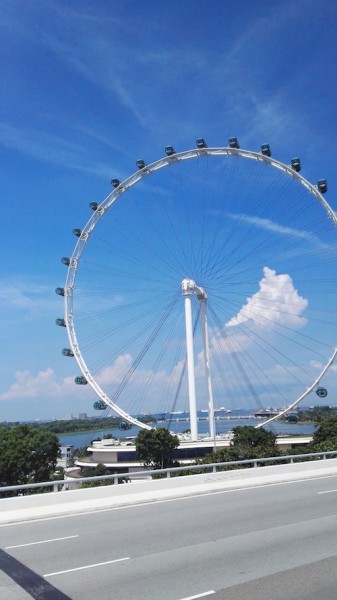 Random shot out of a bus window
Random shot out of a bus window
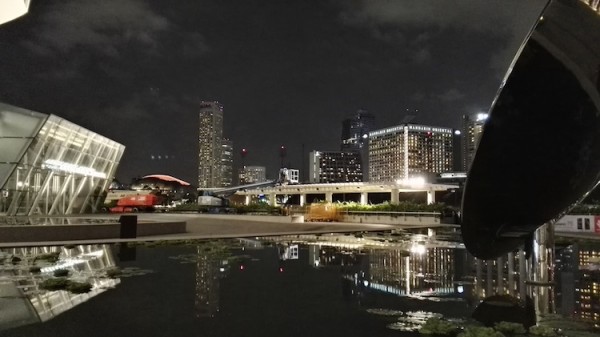 Night scene – a little noisy, but it’s still acceptable
Night scene – a little noisy, but it’s still acceptable
The one camera feature that Huawei is most proud of is definitely the Light Painting mode, which is basically a very slow shutter mode so you can take pictures of light drawings. There are four different “light paintings” you can pick from – car light trails, light graffiti, silky water, or star track.
During the regional launch event, Huawei had some light performance for us to test out the feature, and here are some of the pictures. Do note that all of them are captured while on a slow moving boat crowded by people, so the background is blur and I didn’t have the best angle. Fortunately though, the light graffiti turned out fine.
SAMPLE IMAGES
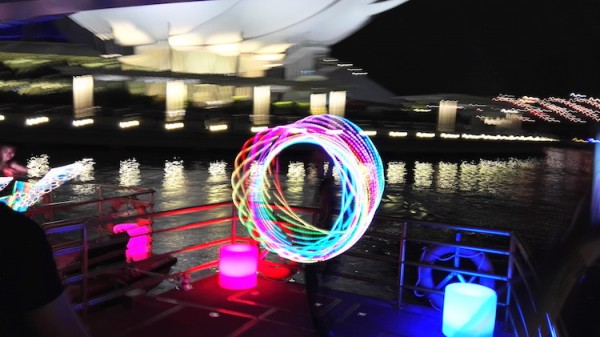 It’s a pretty simple to use feature, but if you would like to take nicer pictures, make sure you have a tripod handy.
It’s a pretty simple to use feature, but if you would like to take nicer pictures, make sure you have a tripod handy.
BATTERY LIFE
The battery life isn’t something to shout about. On average use, it can last one full working day and maybe even to the next day, but it probably won’t make it past your morning commute.
On a busy day with GPS, WhatsApp, Messenger and the browser being constantly used, it lasted about 6 hours before the battery became completely flat. It was the worst day to forget to bring my power bank out. Of course, you can switch to Ultra Power Saving mode to conserve battery, but you’ll only end up with basic phone functions with no internet connection.
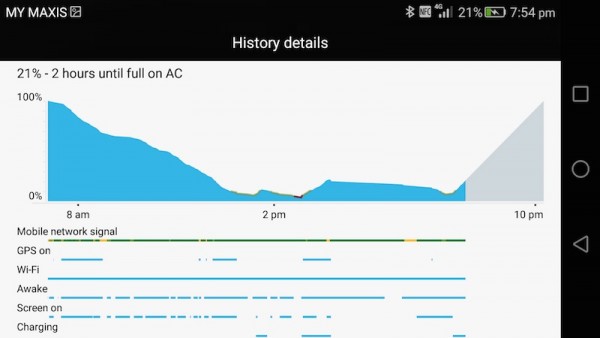
Huawei does have a pretty handy feature called “Consumption Reminder” that notifies you which app is consuming a lot of battery, so you can kill the app. Just make sure you don’t kill off essential apps like WhatsApp, because you won’t receive any messages until you open the app again.
DISPLAY
While most smartphone manufacturers are packing a 2K display into their flagship smartphones, Huawei has decided to go with the safer option – Full HD. If you’re not into high resolution that is barely noticeable under the naked eyes, this can be great because a 1080p display consumes less power, allowing for a better battery life on the P8.
To be honest, Huawei probably made a good choice at this point in time with the display. While the display is very good with colours and viewing angles, the biggest beneficiary is in battery life. As it is, the battery life can be a concern, so imagine how it’d be like with a sharper display.
AUDIO
Huawei has placed the speaker, along with the microphone and micro USB port, at the bottom of the device. This is definitely much better than rear-facing speakers, allowing you to enjoy your video, music and all even when the phone is lying flat on its back. However, I think the volume is a little on the soft side, making it quite hard to talk with the speakers turned on while in the car on a rainy day.
COMPETITION
At RM1,799, the Huawei P8 is on the higher end of the scale, and it easily trumps mos of this year’s mid-range devices or 2014 flagship smartphones. Take the Samsung Galaxy A8 (RM1,888) and HTC One E9+ (RM1,899) that were both launched in Malaysia last week for example. The \Galaxy A8 has a very nice premium metal build, but has mid-range specs, while the HTC One E9+ is a high-end device with a plastic build.
Other alternatives include the Sony Xperia Z3 Compact (RM1,899) and its smaller footprint, the OnePlus One (RM1,270), the 3G-only Xiaomi Mi 4 (RM899) but with a Snapdragon 801, and the larger Xiaomi Mi Note (RM1,549).
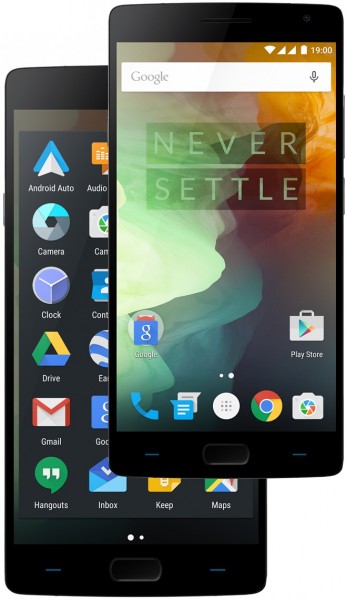
The biggest competitor would definitely have to be the newly announced OnePlus 2 that packs everything (almost) into a smartphone that retails from US$329 (that’s about RM1,270). It has the latest hardware like a Snapdragon 810 processor, fingerprint sensor and up to 4GB of RAM.Getting your hands on one will not be an easy task though, which may be why Huawei should be more concerned of the earlier mentioned alternatives.
CONCLUSION
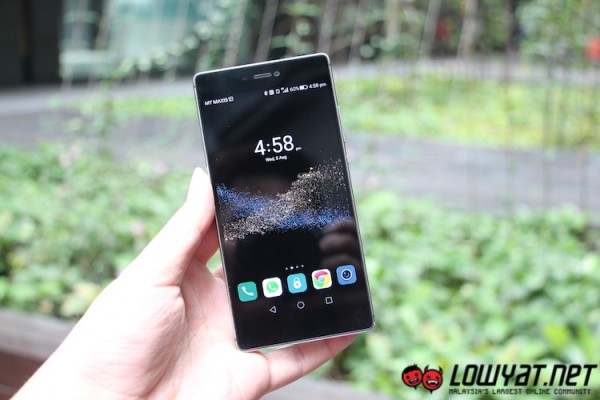
If you take into consideration about how mid-range Qualcomm Snapdragon 615-powered smartphones are costing as much as RM1,900 nowadays, I think that the Huawei P8 is a decently-priced well-rounded phone. It’s one of the most affordable high-end smartphones in the market right now, and despite a few software niggles, there are few genuine complaints.
At such a challenging period for the smartphone industry, Huawei has delivered a solid package in the P8, affirming its status as one of the brands the other players should really watch out for.
Follow us on Instagram, Facebook, Twitter or Telegram for more updates and breaking news.


